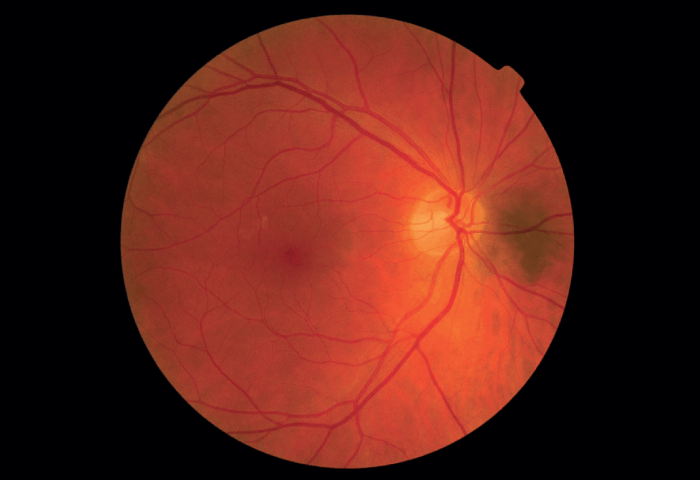
What’s in a nevus? Choroidal nevus – a flat, benign pigmented area that appears in the back of the eye – may seem innocuous, but can lead to overlying retinal edema or atrophy with related vision loss. This seemingly innocent tumor can even have the potential to transform into malignant melanoma. And, as Carol Shields, Director of Ocular Oncology Service at Wills Eye Hospital and Thomas Jefferson University in Philadelphia, reports, choroidal nevus is present in 4.7 percent of the US adult population (1) – nearly one in 20 people.
Over the last 12 months, Shields’ team has published three longitudinal studies regarding the potential of nevus to transform into melanoma, reporting on a total of 3,806 choroidal nevi examined with OCT, ultrasonography, and standard wavelength autofluorescence. Shields comments, “Using Kaplan-Meier analysis, we revealed transformation into melanoma in 5.8 percent of cases at five years and 13.9 percent of cases at 10 years. Multivariate factors predictive of transformation included thickness more than 2 mm (by ultrasonography), subretinal fluid (by OCT), symptoms of vision loss (by Snellen acuity), orange pigment (by autofluorescence), hollow melanoma (by ultrasonography), and diameter more than 5 mm (by photography).”
As she mentions, these important factors can be recalled with the mnemonic “To Find Small Ocular Melanoma Doing IMaging,”or TFSOM-DIM. The mean five-year estimate of nevus growth into melanoma varied from 1.1 percent for those with no risk factors to 55 percent for those with five. Management of small choroidal melanoma typically involves plaque radiotherapy with five- and 10-year rates of tumor recurrence at 7 and 11 percent, visual acuity loss (three Snellen lines) at 39 and 49 percent, and melanoma-related metastasis at 4 and 9 percent.
There is good news on the horizon. A novel infrared dye-conjugated virus-like nanoparticle (AU-011) is currently under investigation for treatment of small choroidal melanoma, with the goal of controlling tumors and minimizing vision loss.
Shields further asserts, “Treatment of small melanoma with plaque radiotherapy offers tumor control, but it comes with the potential for vision loss. We are currently trialing a novel nanoparticle therapy using AU-011 – we’re hopeful it could have a positive impact on patient management in the future. For the time being, our best hope in the detection of small choroidal melanoma is the mnemonic, TFSOM-DIM. If we could identify all choroidal nevi at risk of transformation – and treat promptly – we could save countless lives from melanoma-related metastasis.”
References
- C Shields et al., “Small choroidal melanoma: detection with multimodal imaging and management with plaque radiotherapy or AU-011 nanoparticle therapy,” Curr Opin Ophthalmol, 30, 206 (2019). PMID: 30844944.
